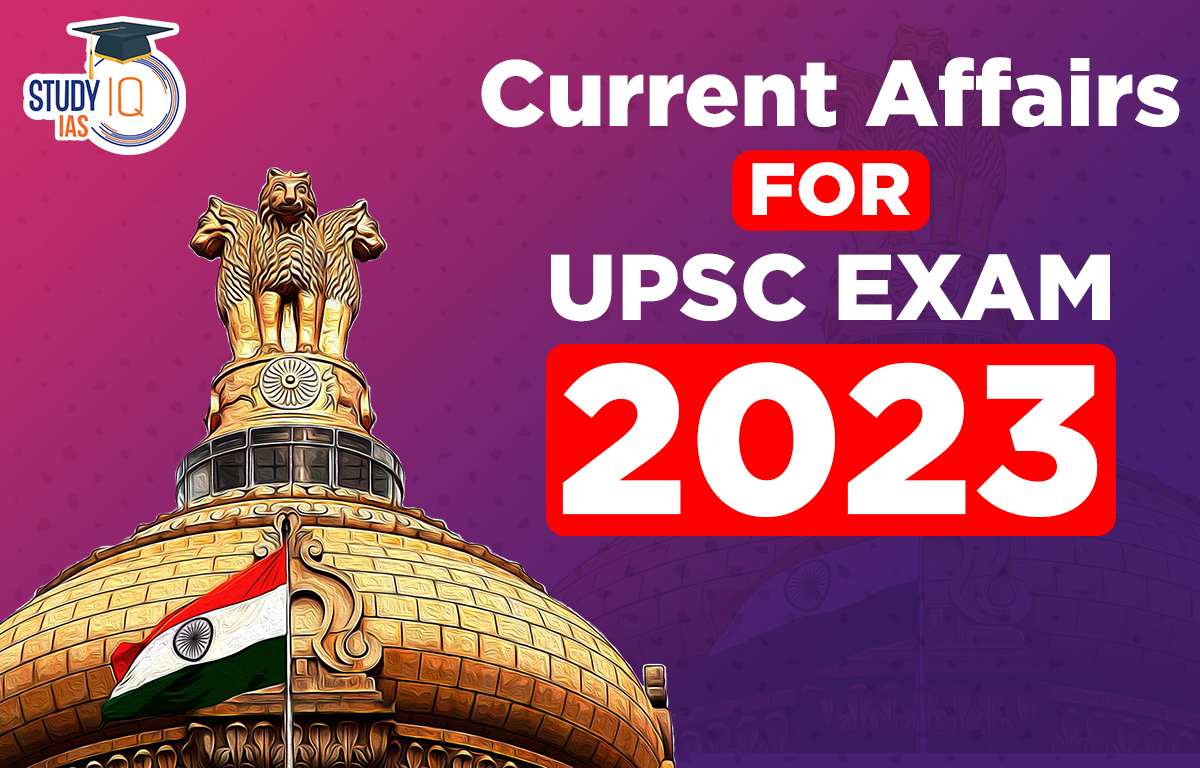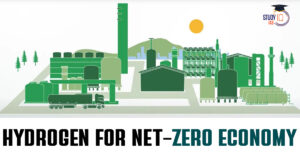Current Affairs 29th April 2023 for UPSC Prelims Exam
PM SHRI Scheme
Context: Under the Pradhan Mantri Schools for Rising India (PM-SHRI) scheme, 6,448 schools from 28 states and union territories have been chosen for upgrading..
About PM SHRI Scheme:
- It is a Centrally Sponsored scheme announced in 2022.
- Objective:
- Objective is Development of more than 14500 schools across the country by strengthening selected existing schools being managed by Central Government/ State/ UT Government/ local bodies.
- To showcase the components of the National Education Policy, 2020 and serve as a model school.
- Duration:
- The duration of the scheme is from 2022-23 to 2026-27, after which it shall be the responsibility of the States/UTs to continue to maintain the benchmarks achieved by these schools.
- Eligibility:
- Existing schools run by the Centre, States, UTs, and local bodies, including KVs, JNVs, state government schools, and those run by municipal corporations.
- Cost Sharing Ratio:
- 60:40 between Union Government and States/UTs (90:10 in certain cases)
- Criteria for Selecting Schools
- To be selected as PM-SHRI schools, urban schools were required to score at least 70%, while rural schools needed to score at least 60%.
- The selection process was based on six broad parameters:
- Curriculum, pedagogy, and assessment
- Access and infrastructure
- Human resources leadership
- Inclusive Practices and gender equity
- Management, monitoring, and governance
- Beneficiary satisfaction
- Selection process: It had three stages:
- Firstly, states and UTs had to agree to implement NEP in its entirety and sign MoUs.
- Then, schools eligible for selection were identified based on a minimum benchmark using UDISE+ data.
- Finally, the selected schools had to compete for the PM-SHRI status.
- Selected Schools:
- Uttar Pradesh has the most selected schools (928), followed by Andhra Pradesh (662), Telangana (543), Maharashtra (516), Madhya Pradesh (416), and Rajasthan (402).
- Key features:
- The PM SHRI Schools will be developed as Green Schools, incorporating environment-friendly aspects.
- These will be equipped with solar panels, LED lights, nutrition gardens, and waste management, water conservation and harvesting systems.
- Modern facilities: including ICT (information and communication technologies) facility, smart classrooms, library, digital library, science labs and vocational labs etc.
- Campaign to enroll all out-of-school children and dropouts, especially girls, into formal or alternative schooling modes.
- A national mentoring program that will connect experienced teachers and school leaders with their peers and juniors for guidance and support.
- The pedagogy adopted in these schools will be more experiential, holistic, integrated, play/toy-based (particularly in the foundational years), inquiry-driven, discovery-oriented, learner-centric, discussion-based, flexible, and enjoyable.
- The focus will be on the learning outcomes of every child in every grade.
- Assessment at all levels will be based on conceptual understanding and application of knowledge to real-life situations and will be competency-based.
- Linkage with Sector Skill Councils and local industry for enhancing employability and providing better employment opportunities will be explored.
- A School Quality Assessment Framework (SQAF) is being developed, specifying the key performance indicators to measure outcomes.
- The PM SHRI Schools will be developed as Green Schools, incorporating environment-friendly aspects.
Current Affairs 28th April 2023 for UPSC Prelims Exam
PRET & the Big Catch-up Initiative
Context: In response to the Covid-19 pandemic, two initiatives – PRET and the Big Catch-up – have been launched to better prepare for future outbreaks, as well as to boost vaccination rates among children.
What is the PRET Initiative?
- The Preparedness and Resilience for Emerging Threats (PRET) Initiative was launched by the WHO and operates under the aegis of the International Health Regulations (IHR), 2005, which is a critical international legal instrument for managing public health emergencies.
- It was announced at the Global Meeting for Future Respiratory Pathogen Pandemics held in Geneva, Switzerland.
- Three Tiers of Pandemic Preparedness: It recognizes that there are three tiers of systems and capacities relevant to pandemic preparedness:
- those that are cross-cutting for all or multi-hazards
- those that are relevant for groups of pathogens (respiratory, arboviruses etc.)
- those that are specific to a pathogen.
The Big Catch-up:
- To mitigate this crisis of missed essential immunization against critical diseases in 2021, in part due to the COVID-19 pandemic, the WHO, under Immunization Agenda 2030 along with other public health organizations have come together to implement The Big Catch-up.
| Collaborators | WHO, UNICEF, Gavi, the Vaccine Alliance, Bill & Melinda Gates Foundation, Immunization Agenda 2030, and other health partners. |
| Objective | Boost childhood vaccination rates and reverse declines caused by the COVID-19 pandemic. |
| Target Countries | 20 countries including India, where three-quarters of the children who missed vaccinations in 2021 live. |
| Salient features | Salient features include Strengthening healthcare workforces, improve health service delivery, build demand for vaccines, and address obstacles to immunization. |
| Immunization Agenda 2030:
It has set a target of avoiding 50 million vaccine-preventable infections in this decade; it intends to reduce the number of zero-dose children by 50% and achieve 90% coverage for essential vaccines. |
|
Central Drugs Standard Control Organisation (CDSCO)
Context: At least 48 commonly used medicines have failed the latest drug safety test conducted by the Central Drugs Standard Control Organisation (CDSCO)
About Central Drugs Standard Control Organisation (CDSCO)
- It is under Directorate General of Health Services, Ministry of Health & Family Welfare.
- Drugs Controller General of India (DCGI) is the head of the CDSCO.
- It is the National Regulatory Authority (NRA) of India.
- It is the Central Drug Authority for discharging functions assigned to the Central Government under the Drugs and Cosmetics Act.
Function of CDSCO
- It is responsible for approval of licenses of specified categories of Drugs such as blood and blood products, IV Fluids, Vaccine and Sera.
- It is responsible for approval of New Drugs, Clinical Trials in the country, laying down the standards for Drugs, control over the quality of imported Drugs, coordination of the activities of State Drug Control Organisations and providing expert advice with a view of bring about the uniformity in the enforcement of the Drugs and Cosmetics Act.
SUPREME Initiative
Context: Recently, Ministry of Science and Technology has launched a SUPREME initiative to provide financial support for the upgradation and maintenance of analytical instrumentation facilities (AIFs).
About Support for Up-gradation Preventive Repair and Maintenance of Equipment (SUPREME)
- It is a first-of-its-kind programme by the government, which extends financial support for repair, upgradation, maintenance, retrofitting, or acquiring additional attachments to increase functional capabilities of existing analytical instrumentation facilities.
- Eligibility: Different facilities created under the projects/Analytical instrumentation facilities (AIFs) with the support of DST only will be considered for funding support under this Scheme.
- UGC recognized Central Universities/State Funded Universities/Deemed Universities /Private Universities among others are also eligible to apply under this scheme.
- Duration: The duration of support will be for a period not exceeding 3 years.
- Funding Pattern: The funding pattern in the scheme would be 75:25 for all private and government-owned institutions (except for state-funded institutions for which 100% funding would be considered).
Analytical Instrumentation
- It plays an important role in the production and evaluation of new products and in the protection of consumers and environment.
- It is used in checking the quality of raw materials such as substances used in integrated circuit chips, detection and estimation of impurities to assure safe foods, drugs, water and air, process optimization and control, quality check of finished products and research and development.
Sophisticated Analytical Instrument Facilities (SAIF) Scheme
- It is being implemented regionally with the objective to provide facilities of sophisticated analytical instruments to the research workers in general and especially from the institutions which do not have such instruments to enable them to pursue R&D activities.
- This enables the institutions acquiring such facilities to keep pace with development taking place globally.
- It is a flagship scheme of Department of Science and Technology (DST).
Bluewashing
Context: A recently released report by the International Panel of Experts on Sustainable Food Systems (IPES), accused some corporate firms of ‘blue-wash’ or ‘social-wash’.
About Bluewashing
- Bluewashing is a term used to describe companies that use corporate propaganda or public relations to make it appear as though they are socially responsible without actually taking any meaningful action or making any real changes.
- Bluewashing is a marketing technique used by companies to promote their social responsibility initiatives.
- It involves using corporate language and imagery to create the perception that a company is more socially responsible than it actually is.
- Companies may use Bluewashing to gain a competitive advantage, improve their brand image, and increase consumer trust, despite not implementing significant changes or meaningful actions.
- This can be done through campaigns emphasizing sustainability or corporate ethics when those actions have little substance behind them.
- Reason for Bluewashing: Companies may create small and temporary social actions and promote other initiatives that suggest they are conscious. However, these efforts are only sometimes genuine and often lack any meaningful change or impact.
- This kind of corporate propaganda utilizes Greenwashing as an effort to deceive customers into thinking a company’s products or services create more positive impact than they actually create.
- By portraying themselves as friendly and responsible with society and communities around the operations, companies hope to increase their business and strengthen their brand identity as socially responsible.
- Furthermore, many companies do Bluewashing to avoid negative press about their practices.
- Bluewashing is a dangerous tool for companies to present themselves as eco-friendly and socially responsible falsely.
Greenwashing
- It is the act of making false or misleading statements about the environmental benefits of a product or practice.
- Term was coined back in 1986 in an essay by environmentalist and then student Jay Westerveld.
- Greenwashing happens when a company makes an environmental claim about something the organization is doing that is intended to promote a sense of environmental impact that doesn’t exist.
Transportation Security Administration (TSA)
Context: Government of India is considering the creation of a unified security force for all airports in the country along the lines of the Transportation Security Administration (TSA) of the U.S.
About Transportation Security Administration (TSA)
- It is a U.S. agency created following the September 11, 2001, terrorist attacks
- It is mandated with developing and implementing policies to ensure the safety of the nation’s transportation systems.
- Mission: To protect the nation’s transportation systems and ensure freedom of movement for people and commerce.
- It was established by the Aviation and Transportation Security Act.
Need of TSA like Structure in India
- Unified Architecture: Currently there are multiple stakeholders involved in providing security to Airport related infrastructure in India:
- Bureau of Civil Aviation Security, which is the security watchdog for civil aviation, falls under the Ministry of Civil Aviation.
- Bureau of Immigration, which works under the Intelligence Bureau of the Union Home Ministry is responsible for immigration checks at airports, sea ports and land borders.
- The Central Industrial Security Force, which guards the airports, falls under the Ministry of Home Affairs.
- The Customs department falls under the Finance Ministry.
- To cater increasing potential of Indian Aviation Sector: India is pegged to be the third largest aviation market in the world by 2024 and is already the third largest domestic aviation market after the U.S. and China.
- It is also the world’s fastest growing market at 9%, though it accounts for only 2% of the global passenger traffic.
- The total number of airports in the country are also targeted to grow from the current 148 to 220 by 2025, and airlines have more than 1,000 aircraft on order.


 AI and its Regulation in India, Limitati...
AI and its Regulation in India, Limitati...
 Hydrogen For Net-Zero Economy, Governmen...
Hydrogen For Net-Zero Economy, Governmen...
 Mantis Shrimp - Latest Research News and...
Mantis Shrimp - Latest Research News and...





















